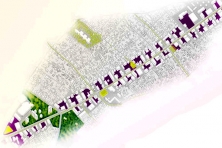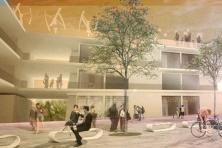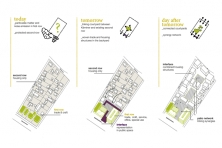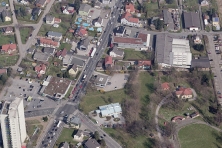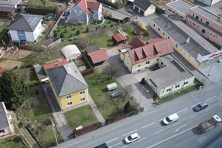Backyard Forward!
Graz (AT) - Mention Spéciale
DONNÉES DE L’ÉQUIPE
Représentante d’équipe: Anna Kübler (DE) – architecte urbaniste
Associés: Christiane Kolb (DE) – urbaniste et architecte paysagiste; Leonard Higi (DE) – architecte urbaniste
Hartmeyerstraße 38, 72076 Tübingen (DE)
+49 151 54 711 511 – hello@kollectivnordsued.de
Voir la liste complète des portraits ici
Voir la page du site en anglais ici

Ana. Kübler, L. Higi & C. Kolb
INTERVIEW en anglais
Cliquer sur les images pour les agrandir
1. How did you form the team for the competition?
Although our ways crossed several times at the University of Stuttgart, we have never developed a project together before. Europan gave us the chance to change that and to bring in our different attitudes and backgrounds – architecture, urban planning, landscape architecture and futures studies. Working together was a great experience – we had intense discussions and debates but did not forget to have a good time together, as we had spread to the North and South of Germany. “kollektivnordsüd” was born.
2. How do you define the main issue of your project, and how did you answer on this session main topic: the place of productive activities within the city?
In our point of view, productivity means the product of a city’s emergent processes - the surplus a city delivers beyond pure self-sufficiency. It is not only about industrial but also about cultural, social or academic productivity. The locations where this productivity takes place are crucial for defining a city’s specific character.
3. How did this issue and the questions raised by the site mutation meet?
In our opinion the typology of the backyard can serve as the backbone of that characteristic development described above. The backyard, typical typology in the city of Graz, mediates between the different morphologies on site – detached housing in the second row and Kärntner Strasse. It also accommodates different sub-typologies which attract multiple uses. The common yard area promotes exchanges and communication and creates its own identity. In addition, this area can be developed and used in different ways and at multiple times, which plays a major role in a sustainable strategy considering scarce land resources within cities.
4. Have you treated this issue previously? What were the reference projects that inspired yours?
We treated the topic of productive cities in different ways and within different contexts – both as students and academics in design studios and seminars at the University of Stuttgart, but also as participants of a workshop at the International Architecture Biennale of Rotterdam entitled “The Next Economy” which took place in 2016. In addition to that we also discussed this particular issue in several projects as employees in different offices. This shows the importance we assign to that topic. Nevertheless we always discussed it in different ways and from different points of view, defining and interpreting it depending on the special context.
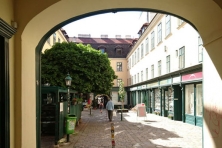
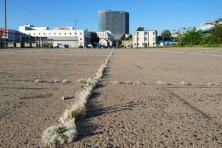
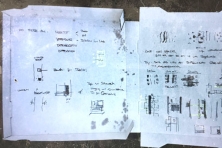
5. Urban-architectural projects like the ones in Europan can only be implemented together with the actors through a negotiated process and in time. How did you consider this issue in your project?
The modular spatial strategy we designed is the foundation of the city of Graz that can base its activity on curating the development of Kärnter Strasse involving different stakeholders and uses. The framework of courtyards allows a flexible and integrated development as results of a participative process. Potential developers have to address the administration of Graz. Together with the administration they search for a suitable plot and appropriate stakeholders. In an evaluation process they select the stakeholders as well as the projects and create a roadmap for the development of the courtyards along Kärntner Strasse. A local district management offers a platform for stakeholders. In addition to the spatial framework of stable and dynamic elements, they have to orientate on the basic rules we defined to guarantee the required spatial quality.
6. Is it the first time you have been awarded a prize at Europan? How could this help you in your professional career?
This is the first time that we participated in Europan and we are very happy and proud to have been awarded. We consider the development of our contribution to the competition as a very valuable learning process, advancing our professional attitude and expanding our skills in intense discussions and work processes. It would be wonderful if the experience, the contacts and the energy could take us further on a common way – we are highly motivated and excited about future collaborations that are about to come.
